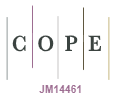Dialogues between literary and visual art - Lygia Clark: live lines, possible dialogues
DOI:
https://doi.org/10.5585/eccos.n53.16640Keywords:
Education, Literature, Art, Verbo-visual reading, Verb textual verbiage.Abstract
The article is an excerpt from a qualitative research (2017-20190) on the role of literature / art in the formation of the child's authoring and reading attitude. In this section, we present a proposal for the verbal-visual reading of verbal-signs and visual-signs in relation, with the corpus of the book Lygia Clark: Live Lines. As a methodological procedure, the dialogical relations of the text in their verbo visuality are analysed to reveal the possibilities of expanding the meanings produced by the text and reading. It is theoretically supported by authors like Bakhtin (2012); Vigotski (2010); Ponzio (2012); Goulart (2009); Kramer (2001) and others. It is considered that Lygia Clark's (1968) propositional art can favour the exploration of verb-visual text by children, inserting them in verb-visual reading. Possible ways for reading the verb-visual text are pointed out, fundamental for the constitution of the child as a reading subject. It is concluded that the exploration of the book Lygia Clark: live lines creates possibilities for children to appropriate the literary and visual art that contribute to the reading formation.
Downloads
References
ANTUNES, D. C. O desafio da estética para a educação: Adorno na contramão de uma subjetividade danificada. Revista Sul-Americana de Filosofia e Educação. n. 24, maio-out, 2015, p. 172-188.
BAKHTIN M. M. Para uma filosofia do ato responsável. 2ª ed. São Carlos: João & Pedro Editores, 2010.
CLARK, L. Proposições. In: FUNARTE (col. Arte Brasileira contemporânea). Rio de Janeiro: Funarte, 1980.
FERVENZA, H. Considerações da arte que não se parece com a arte. Revista das Artes Visuais. v. 13, n. 23, p. 1-9, 2005.
FREITAS; M. T. de A.; BERNARDES, A. S.; PEREIRA, A. P. M. S.; PEREIRA, M. L. Sujeito nos textos de Vigotski e do Círculo de Bakhtin. Fractal, Rev. Psicol., v. 27, n. 1, p. 50-55, 2015.
GOULART, C. Em busca de balizadores para a análise de interações discursivas em sala de aula com base em Bakhtin. R. Educ. Públ. Cuiabá, v. 18, n. 36, p. 15-31, jan./abr. 2009.
GULARTE, P. Os Bichos de Lygia Clark: A linha para a Participação na Arte. In: GULARTE, P. Sonhos e alegrias. Disponível em: http://sonhosealegrias.blogspot.com/2010/12/os-bichos-de-lygia-clark-linha-para.html. Acesso em: 01 março 2019.
KRAMER, S. Infância e educação: o necessário caminho de trabalhar contra a barbárie. In: KRAMER; LEITE; NUNES; GUIMARÃES (orgs.). Infância e educação infantil. Campinas, SP: Papirus, 2010.
KUGLER, H. Borboletas viajantes. CHC – revista ciência hoje das crianças. Disponível em http://chc.org.br/borboletas-viajantes/. Acesso em 03 março 2019.
POUND, E. A arte da poesia. Ensaios Escolhidos. 2ª ed. São Paulo: Cultrix, 1988.
PONZIO, A. A concepção bakhtiniana do ato como dar um passo. In: BAKHTIN, M. M. Para uma filosofia do ato responsável. 2ª ed. São Carlos: Pedro & João Editores, 2012.
SANT’ANNA, R.; PRATES, V. Lygia Clark: linhas vivas. São Paulo: Editora Paulinas, 2006.
SANT’ANNA, R.; PRATES, V. Lygia Clark: linhas vivas - caderno ateliê. São Paulo: Editora Paulinas, 2006.
TOFALINI, L. A. B. A arte de dizer e silenciar: dialética-gênese da “prosoema”. In: Celli – colóquio de estudos linguísticos e literários. 3, 2007, Maringá. Anais [...]. Maringá: Editora UEM, 2009. p. 624-632.
VIGOTSKI, L. S. A quarta aula: a importância do meio para a pedologia. Psicologia USP, São Paulo, 2010, 21(4), 681-701.
VOLOCHÍNOV, V. Marxismo e filosofia da linguagem. 1ª ed. São Paulo: Editora 34, 2017.
Downloads
Published
How to Cite
Issue
Section
License
Copyright (c) 2020 EccoS – Revista Científica

This work is licensed under a Creative Commons Attribution-NonCommercial-ShareAlike 4.0 International License.






